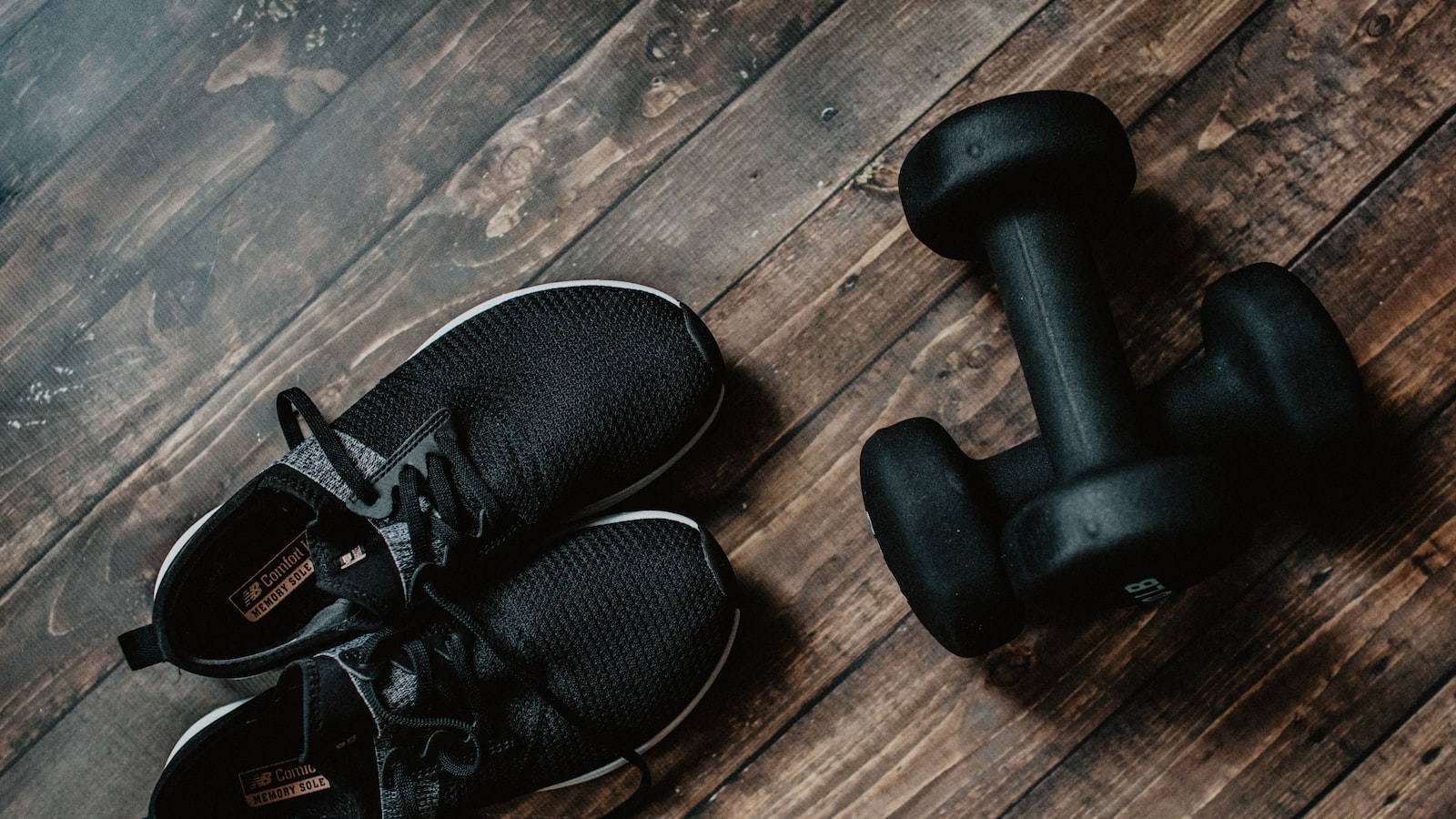
Uncovering the Components of Fitness
Staying fit and healthy is so important. It’s not only about being able to maintain a healthy weight, but there are also other benefits like feeling great, having more energy, and improving your overall mood. If you want to ensure you are in the best physical condition, it’s important to understand the components of fitness. Read on to discover the different elements that make up physical fitness.
List of Content
- 1. What is Fitness?
- 2. Types of Fitness Components
- 3. Assessing Your Fitness Level
- 4. Exercise for Optimal Fitness
- 5. Making Healthy Diet Changes
- 6. Developing Healthy Habits for Long-Term Fitness
- You Ask, I answer

1. What is Fitness?
Fitness is a broad term used to describe the ability to perform various physical activities efficiently and effectively. Achieving a high level of fitness involves a few different components, including muscular strength, endurance, and flexibility. Having greater strength, endurance, and flexibility allows an individual to perform physical tasks in a more efficient manner; thereby promoting physical and mental wellbeing over time.
Muscular Strength: Strength is the ability to move or lift heavy objects. This particular aspect of fitness allows one to perform everyday tasks more efficiently. It also has the capacity to promote balance and stability; thereby preventing injuries from falls and other accidents.
Endurance: Muscular endurance outlines the ability to perform activities for an extended period of time. Building muscular endurance allows those who engage in dynamic activities, such as running, to perform activities for longer than before. This subsequently increases the individual’s physical capacity for certain activities.
Flexibility: Flexibility is the capacity of a muscle to extend to its full range of motion. Increasing flexibility is beneficial for performance in everyday activities, but it also helps reduce the risk of sprains or muscle strains (common sports injuries). To achieve this, one must stretch and do yoga or Pilates.
- Increasing muscular strength can enhance everyday tasks.
- Improving muscular endurance leads to increased physical capabilities.
- Developing flexibility helps reduce the risks of injuries.

2. Types of Fitness Components
Physical Activity
Physical activity encompasses a range of activities from contained activities such as recreational sports to higher intensity activities such as weight lifting and Cross-Fit. Regardless of the intensity of the activity, it is important to engage in regular physical activity to keep your body fit, active, and healthy.
Cardiovascular Endurance
Cardiovascular endurance is a key component of fitness. It is the capacity of your body to utilize oxygen and utilize energy over longer periods. To improve your cardiovascular endurance, it is important to engage in sustained activities such as running, swimming, cycling, and walking.
Muscular Strength, Power, and Endurance
Muscular Strength can be achieved by engaging in exercises that require the use of resistance. This can include the use of free weights, machines, bodyweight exercises, kettlebells, and bands.
Improving muscular power can be accomplished through explosive exercises such as plyometric or Olympic lifting exercises.
Muscular endurance can be improved with shorter, moderately intense exercises being done repeatedly, like push-ups or long-distance running.
Flexibility/ Mobility
Flexibility/mobility is a vital component of staying fit and helps reduce the risk of injury. To improve flexibility/mobility, it is important to engage in activities such as static stretching, dynamic stretching, foam rolling, and yoga.
3. Assessing Your Fitness Level
Fitness can mean something different for everyone, so it’s important to find a system that works for you. There are several ways to evaluate your current level of fitness, and some of them may have more interest to you than others:
- Fitness Tests – These are tests designed to evaluate various aspects of physical performance, such as strength, agility, and cardiovascular endurance. Some tests are formalized, like the timed mile or a strength-based assessment, while others can be as simple as tracking how far or how fast you can walk or jog.
- Questionairres – There are questionnaires designed to measure physical activity, diet, and lifestyle-related health risks. These assessments identify areas where you can improve, and provide you with a baseline for building a better overall system of fitness.
- Body Composition Analysis – If you have access to resources such as a gym or medical center, you can use various tests to measure body composition, such as body fat percentage and muscle mass.
- Self-Assessment – A simple self-assessment can be a great place to start. By objectively evaluating your current physical condition, you can get an idea of where you stand and start making changes to reach your goals.
Creating a Fitness Plan
Once you have assessed your current level of fitness, it can be helpful to take the next step and create a fitness plan. This should include elements such as the types of activities you will do, how often you will do them, and what goals you are aiming for. Keep in mind that even small changes in diet, lifestyle, and physical activity can have major positive impacts on your overall health.
Measuring Progress
Finally, it can be useful to measure progress over time. This can be done by going back to the tests and questionnaires used to assess fitness, or simply keeping a log of your diet, sleep, and exercise habits. It can also be helpful to have a fitness buddy to help keep you accountable and motivated. Measuring progress over time can help to keep you motivated and on track to reach your goals.
4. Exercise for Optimal Fitness
Exercise is essential for optimal fitness. No matter who you are, your age, or how active you are, there are exercises you can do to help improve your physical and mental health. Here are four simple exercises you can do to get started:
- Aerobic exercise: Aerobic exercises like walking, jogging, dancing, or cycling have many benefits. They help to improve your heart health, reduce stress, and boost your mood. Moreover, they can help increase your energy levels and improve your coordination.
- Strength training: Strength training is good for toning your muscles and building strength. You can do simple exercises like push-ups, squats, and lunges with little or no equipment. To gain more muscle, you can try lifting weights or using resistance bands.
- Flexibility training: Flexibility training is important for people of all ages. Stretching exercises can help ensure that your muscles and joints stay strong and healthy. You can learn many simple stretching techniques to improve your balance, flexibility, and range of motion.
- Balance training: Balance exercises can help strengthen your core muscles and improve your posture. Some simple exercises to start with are standing on one foot, walking heel to toe, and side shuffling. With regular practice, these exercises can help improve your balance and coordination.
These four exercises can be combined to create a comprehensive fitness routine that is tailored to your individual needs. Remember to start slowly and gradually increase the intensity and duration of your workouts over time.
Before beginning any exercise program, it’s important to make sure you talk to a healthcare professional or certified trainer. That way, you’ll be able to get started on the right foot and make sure your workouts are beneficial for your physical and mental health.
5. Making Healthy Diet Changes
is not always easy, but the effort is worth it. Here are a few simple tips to get you started:
- Start slow – restrictive diets often backfire, so begin with smaller changes that you can commit to long-term
- Be mindful of portion size – keeping track of serving sizes will go a long way in controlling your calorie intake
- Eat more fiber – fiber-rich foods can help you feel fuller for longer, offering a better alternative than empty calories
- Choose ‘good’ carbs – swapping simple carbs for complex carbs is a good place to start. Think whole-grain, oats & more
Make meal planning a priority. Planning your meals in advance will help you stay on track and better control your overall diet. Aim to plan out 3 or 4 days’ worth of meals at a time. Include a mix of nutrient-rich foods often and, if you feel like it, include a splurge meal to enjoy at the weekend.
Think about what goes into each meal. Food variety is important, but aim to include protein, a complex carbohydrate and healthy fats in each meal. You can even keep them organized in a handy chart or table that you can refer to for each meal. Don’t forget to focus on your nutrient needs too – look up how much you need from each food group to stay healthy.
Snack wisely. Snacking can be a great way to tide yourself over until the next meal, as long as you’re mindful of the types of snacks you’re choosing. If you go for something sweet, keep it to a reasonable amount, and try to include a mix of carbs, protein & healthy fats for a balanced snack.
6. Developing Healthy Habits for Long-Term Fitness
Fitness is not something we can expect to achieve overnight, but rather something we need to constantly work on. Developing healthy habits and routines is essential for long-term fitness. Here are a few ways to start getting into a fitness groove:
Set Goals: Break down your fitness journey into manageable goals. Achievable goals help keep motivation levels high and bring you closer to your fitness goals. Make sure to prioritize goals that have both short-term and long-term benefits, such as joining a sport, attending a weekly exercise class, or committing to a certain number of steps a day.
Build Habits: Habits are key for maintaining your fitness regime. Commit to incorporating fitness into your daily routine and try to stick to it. This helps instill healthier behaviors and gives you something to work for in the long run. If there are activities and exercises you particularly enjoy, focus on them and make sure to factor them into your routine – this will help you stay motivated in the long run.
Seek Support: If you need an extra boost, reach out to family and friends. A strong support system helps keep you motivated and accountable. You can also join online fitness forums and communities – this is an excellent way to stay connected with others and get useful tips from experts.
- Set goals and break them down into achievable chunks.
- Build healthy habits and incorporate fitness into your daily routine.
- Seek support from family, friends, and experts in the fitness community.
- Don’t be afraid to try new activities and challenge yourself.
Remember to always take into account your current physical capabilities when deciding which activities and goals are best for you. With a bit of planning and consistency, you can be well on your way to achieving long-term fitness.
You Ask, I answer
Q: What are the components of fitness?
A: The components of fitness include cardiorespiratory endurance, muscular strength, muscular endurance, flexibility, and body composition.
Q: How do these components work together?
A: All of the components of fitness work together to help improve overall health and wellbeing. Cardiorespiratory endurance helps to improve cardiovascular health and endurance, muscular strength and endurance helps to improve muscular strength and balance, flexibility helps to improve range of motion and helps to prevent injury, and body composition helps to regulate body weight and improve health.
Q: Are all of these fitness components equally important?
A: While each component is important in its own way, cardiorespiratory endurance is typically regarded as the most important factor of the five components, as it provides the body with the energy and capacity to perform physical activity. It is important to also prioritize all of other components of fitness in order to maintain overall health and wellbeing.
There you have it—all the basics you need to know about the components of fitness and how they work together to help maximize your physical performance and health. Keep in mind though, this is just the tip of the iceberg. Learning more about fitness and strength training to drive further gains is a fun and rewarding process!

